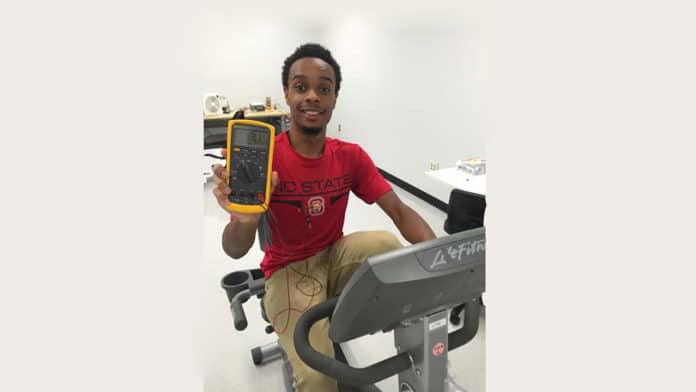Scientists from North Carolina State University have developed a new wearable thermoelectric generator to convert body heat into electricity. This new lightweight wearable thermoelectric generator can effectively generate above 20 μW/cm2 power. This produces far more electricity as compared to previous heat harvesting technologies.
The device generates electricity by using different temperatures between your body and the ambient air. It does not use a heat sink. Thus, it is lighter and much more comfortable.
Discovery of this Wearable thermoelectric generator?
This flexible system is only 2 millimeters thin. The design starts with a thermally conductive material layer. The material rests on the skin and spread out the heat. A polymer layer that prevents heat from depleting in outside air was applied to the material. Thus, body heat passes through a centrally-located TEG that has the size of one cm2. The heat that is not converted into electricity passes through the TEG into an outer layer of thermally conductive material, which instantly depletes the heat.
Daryoosh Vashaee, an associate professor said, “In this prototype, the TEG is only one centimeter squared, but we can easily make it larger, depending on a device’s power requirement.”
Scientists found that the upper arm was an excellent location for harvesting heat. If the skin temperature around the wrist has a higher temperature, the irregular curve of the wrist limits the contact surface area between the TEG band and skin. It means, that wearing a band on the chest limit the airflow until the chest is normally covered by a shirt limiting heat dissipation.
Scientists also integrate TEG with T-shirts. They found that the T-shirt TEGs was capable of generating more than 6 μW/cm2 power if a person is running. Although these T-shirt TEGs are certainly feasible to power wearable technologies. But they are just not as efficient as the upper armbands.
Vashaee says, “The goal of ASSIST was to make wearable technologies that could be used to long-term health monitoring. For example, devices that tracks heart health or monitor physical and environmental variables to predict and prevent asthma attacks. To do so, we want to make devices that don’t depend on batteries. And we think this design and prototype moves us much closer to making that a reality.”
